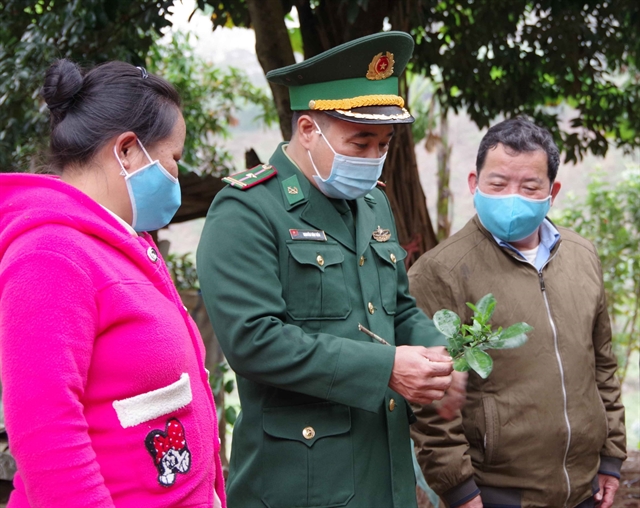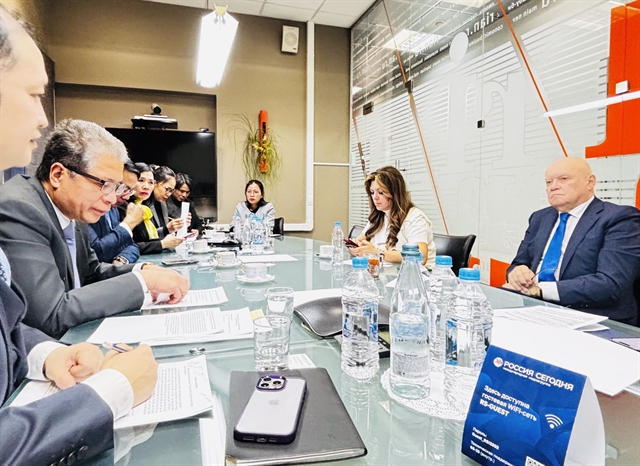 Society
Society

The Government has set out five key tasks to help boost socio-economic development in land border areas. Recently issued Resolution No. 23/NQ-CP on economic development in land border areas covers mechanisms and policies, mobilising and using resources and promoting infrastructure development to boost development.

|
| A border guard guides local people in northern Điện Biên Province on tips to keep trees healthy and strong. — VNA/VNS Photo |
HÀ NỘI — The Government has set out five key tasks to help boost socio-economic development in land border areas.
Recently issued Resolution No. 23/NQ-CP on economic development in land border areas covers mechanisms and policies, mobilising and using resources and promoting infrastructure development to boost development.
Other tasks are enhancing production, effective national defence and security missions as well as ensuring social security and improving social welfare and sustainable poverty reduction in land border areas.
Việt Nam has more than 5,000 kilometres of land border, with many operational border gates. However, many border areas remain poor compared to other parts of the nation.
Accordingly, advancing socio-economic development and social security in these areas is of significant importance to narrow the development gap and strengthen the effectiveness of trade and investment ties with neighbouring countries.
The Government tasked the Ministry of Planning and Investment to take prime responsibility and work with other agencies to step up international cooperation and attract domestic and foreign investment capital, including aid and concessional credits to infrastructure projects in these areas.
The Ministry of Agriculture and Rural Development was asked to coordinate with relevant localities in designing agriculture, forestry and fisheries development plans.
Relevant ministries, agencies and localities with land borders are required to prioritise capital from the State budget and effectively use other sources of capital to invest in infrastructure, particularly developing the transport infrastructure system to connect disadvantaged areas with developed economic zones.
They must also review and restructure land use and complete the allocation of land and forest, particularly for ethnic minorities, to improve their living conditions.
It is important to deal with the shortage of land, houses and safe water and environmental pollution for mountainous and border areas, the resolution says. — VNS




